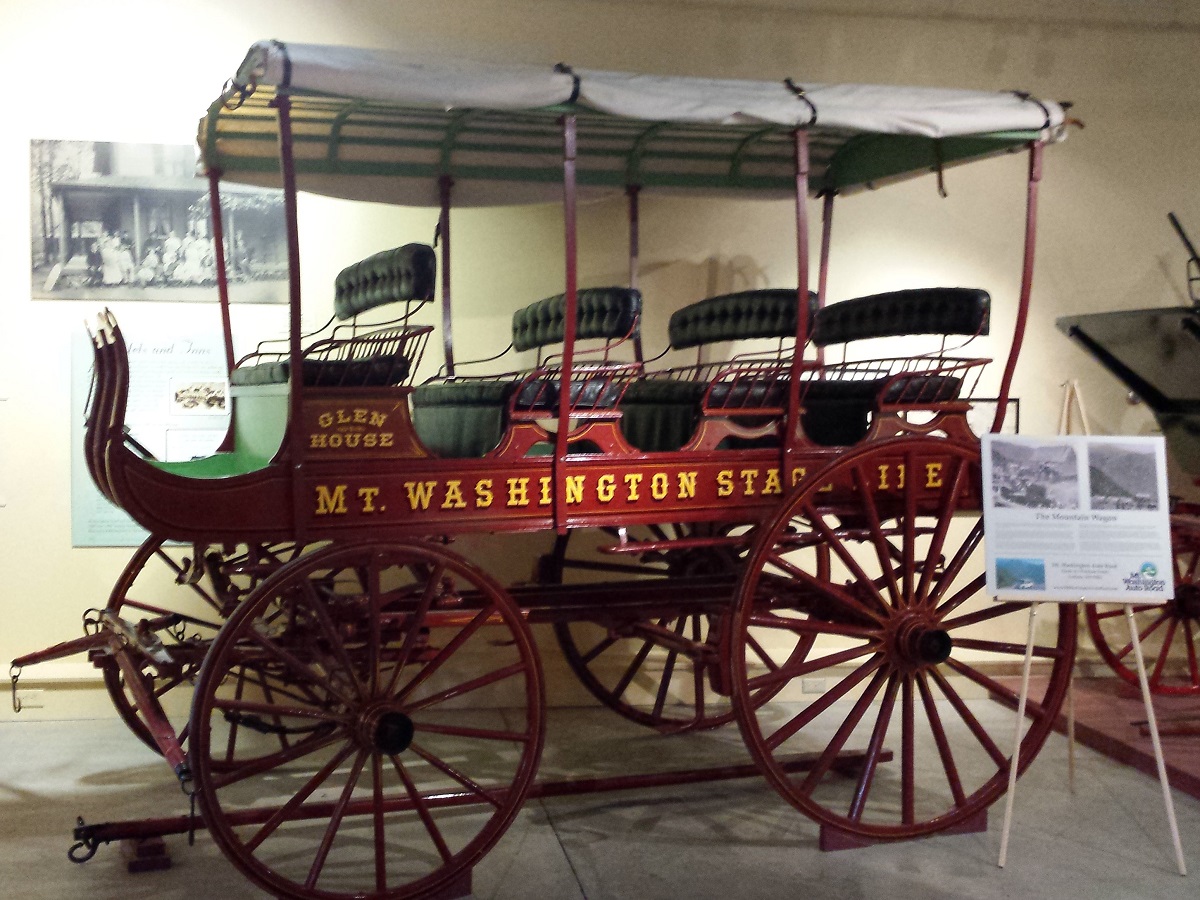Mt. Washington Wagon

Horses were the principal means of transporting the touring public to the summit of Mt. Washington for over 70 years. From the first bridle path in 1840 to the last horse-drawn trip to the top in 1913, real horsepower was the motive force.
When the Mt. Washington Carriage Road opened in 1861, it presented a need for a different sort of horse-drawn vehicle than presently existed. The well-known firm of Abbot-Downing, makers of the famous Concord Coach, responded by developing the Mountain Wagon. This wagon was considerably lighter than previous wagons that were capable of carrying the same number of passengers, yet it was strong enough for the rugged duty on Mt. Washington.
Two versions of this wagon were built, a larger 4-seat model that carried eleven passengers in addition to the driver and a smaller 3-seat model that carried eight passengers plus the driver. Six horses would have pulled the larger wagon when in use on the Carriage Road. The roll-down side curtains were available to help keep out the elements, but were not popular with the drivers due to the increased "sail area" they presented when rolled down, which tended to make the wagon very unstable. In fact, on very windy days, passengers were sometimes requested to help gather stones to put on the floor of the carriage to add ballast against the tipping effects of the wind.
The trip to the top of Mt. Washington took about four hours, including a stop at the Half-way House, where the horses and passengers alike were given a break before the trip up the final 4 miles of exposed roadway. The trip down the mountain took about two hours. The thick leather brake linings that worked against the rear wheels had to be replaced after each trip, since the braking action would have burned through at least one thickness of the leather brake pads by the time the wagon reached the bottom.
Although specifically designed for the Carriage Road, the Mountain Wagon quickly became popular for general touring duty and nearly all of the many hotels and inns throughout the White Mountains owned one or more for their own transportation needs. During the heyday of the Glen House, at the base of the Carriage Road, at least a dozen Mountain Wagons were in service. Mountain Wagons remained in use at Mt. Washington until 1913, when they at last gave way to the growing popularity of the automobile.
...